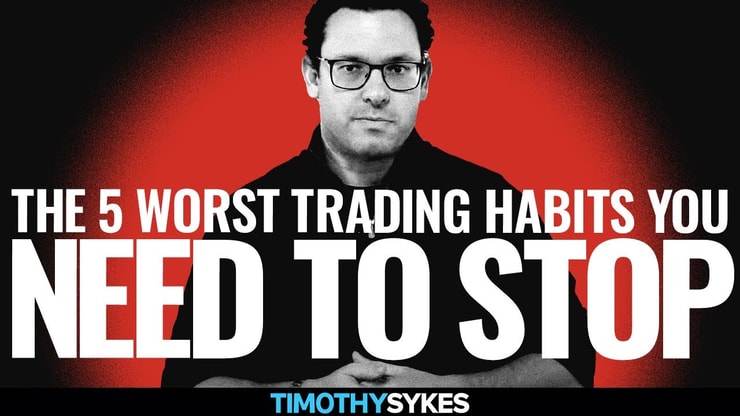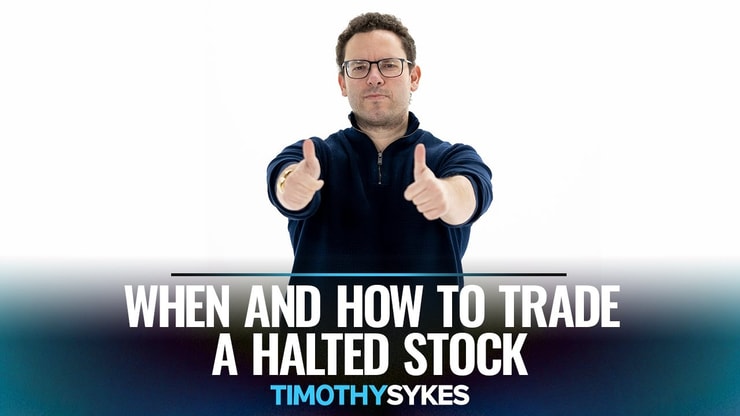In the world of stock trading, circuit breakers serve as a crucial tool to manage market volatility. These mechanisms, known as Limit Up-Limit Down (LULD) rules, are designed to curb panic-selling and prevent a market crash. They use trigger points, halting trading when there’s a significant market price decline, allowing investors to assess the situation and react without fear of too great losses.
For example, during the COVID-19 pandemic, circuit breakers were triggered multiple times due to sharp drops in the market. These events highlighted the importance of having such procedures in place in extraordinary circumstances and crisis. The way these circuit breakers function is based on a combination of factors, including the amount of trading volume and the rate of price changes.
They matter for your trading — more than all of the research and data that goes into them.
Ready to learn what circuit breakers are? Let’s get to it!
Table of Contents
- 1 What Are Circuit Breakers?
- 2 History of Circuit Breakers
- 3 Types of Circuit Breakers
- 4 What Triggers a Circuit Breaker?
- 5 Market Volatility Regulations
- 6 What Happens at Each Breaker Level Threshold?
- 7 Market Wide Circuit Breaker Thresholds
- 8 Individual Stock Price Limits & Trading Halts for Severe Price Decline
- 9 What’s the Function of a Market Circuit Breaker?
- 10 How Do the Exchanges Decide When to Resume Trading After a Circuit Breaker is Triggered?
- 11 What About Stock Index Futures? Do They Have Circuit Breakers?
- 12 Key Takeaways
What Are Circuit Breakers?

In the world of trading, circuit breakers are mechanisms designed to temporarily halt trading on an exchange. This is done to curb panic-selling trades, allowing investors to assess and react to the information at hand. The term “circuit breaker” comes from the idea of breaking the circuit of the rapid sell-off to prevent a complete market crash.
Understanding the intricacies of trading terms is crucial for any trader. If you’re looking to deepen your knowledge, you might find this comprehensive guide on Trading Terms You Need to Know beneficial.
Purpose of Circuit Breakers
The purpose of circuit breakers is to give the market a breather. They are designed to prevent the market from a free-fall past certain levels, providing a pause for traders to make informed decisions rather than reacting out of fear.
Circuit breakers also help in maintaining the orderly functioning of the markets, ensuring that trading is not disrupted due to extreme volatility.
History of Circuit Breakers
In the early years, circuit breakers were relatively rudimentary, with broad-brush rules that applied to the entire market. As markets attracted more value and featured more products, the mechanisms to safeguard them grew in complexity.
Origins of Circuit Breakers
The concept of circuit breakers was introduced after the stock market crash of October 19, 1987, given the title of Black Monday. On this day, stock markets around the world crashed, producing calamitous results in a very short time. The crash began in Hong Kong, spread west through international time zones to Europe, and included the United States after other markets had already declined by a significant margin.
The Dow Jones Industrial Average (DJIA) dropped by 508 points to 1738.74 (22.61%).
In response to this, the U.S. Securities and Exchange Commission (SEC) introduced circuit breakers to prevent such a situation from happening again. The idea was to provide a cooling-off period during large market declines for investors to make rational decisions.
More Breaking News
- TeraWulf Inc. Faces Turbulent Market After Major Contract Announcement: Should Investors Hold Tight?
- Is MicroStrategy on the Verge of a New High After a Wild Bitcoin Spending Spree?
- Unexpected Surge: Breaking Down Opendoor Stock’s Latest Performance
Evolution of the Concept
Over the years, the concept of circuit breakers has evolved. They have been adjusted and fine-tuned based on the experiences of past market disruptions. The rules and thresholds for triggering circuit breakers have been revised several times, most notably after the May 6, 2010 “Flash Crash”.
Circuit breakers are now a common feature of stock markets around the world. Different countries have their own rules and regulations regarding circuit breakers, but the basic concept remains the same: to provide a temporary pause in trading to prevent panic-selling.
Regulation and Implementation in Different Stock Markets
Different stock market indices have different thresholds for triggering market-wide circuit breakers. These thresholds are typically based on the percentage drop from the previous day’s closing price.
For instance, in the U.S., market-wide circuit breakers are triggered by sharp declines in the S&P 500 index. The thresholds are set at the beginning of each quarter based on the average closing price of the S&P 500 index for the previous month.
In India, the Bombay Stock Exchange (BSE) and the National Stock Exchange (NSE) use the Sensex and the Nifty 50 indices, respectively, to apply their circuit breaker rules. If these indices fluctuate by 10%, 15%, or 20% from the previous day’s closing level, the exchange halts trading for a specified period.
In China, the Shanghai and Shenzhen stock exchanges halt trading for 15 minutes if the CSI 300 Index moves 5% from the previous day’s closing, and for the rest of the day if it moves 7%.
Types of Circuit Breakers

There are two main types of circuit breakers: market-wide and single-security.
Day trading plays a significant role in how these circuit breakers function. To understand how day trading impacts the market, consider reading about the Day Trading Definition and its implications.
Market-Wide Circuit Breakers
Market-wide circuit breakers apply to the entire market.
In the U.S., market-wide circuit breakers trigger a trading halt if the S&P 500 index falls by 7% (Level 1), 13% (Level 2), or 20% (Level 3) from the previous day’s closing price.
Single-Stock Circuit Breakers
Single-security circuit breakers, also known as trading curbs or collar, apply to a single stock or other security. In the U.S., single-security circuit breakers trigger a trading halt if the price moves by more than 10% in five minutes for stocks in the S&P 500 index, Russell 1000 Index, and some other actively traded securities and ETFs.
What Triggers a Circuit Breaker?

Circuit breakers are triggered by sharp declines in market indices or individual securities. The specific thresholds for triggering a circuit breaker vary depending on the type of circuit breaker and the rules of the particular exchange.
In the U.S., market-wide circuit breakers are triggered by sharp declines in the S&P 500 index. The thresholds are set at the beginning of each quarter based on the average closing price of the S&P 500 index for the previous month.
Single-security circuit breakers are triggered by sharp price moves in a particular security. The thresholds for triggering a single-security circuit breaker vary depending on the price and trading volume of the security.
For those who engage in day trading regularly, it’s essential to understand the Pattern Day Trader Rules to navigate these situations effectively.
Market Volatility Regulations
Market volatility regulations are rules designed to manage extreme volatility in the stock market. These rules include circuit breakers and other measures such as trading curbs and price bands.
Level 1
A Level 1 market-wide circuit breaker is triggered when the S&P 500 index falls 7% from its previous close. This triggers a 15-minute trading halt for all stocks. However, if the drop occurs after 3:25 p.m., no trading halt is applied.
Level 2
A Level 2 market-wide circuit breaker is triggered when the S&P 500 index falls 13% from its previous close. This also triggers a 15-minute trading halt for all stocks. However, if the drop occurs after 3:25 p.m., no trading halt is applied.
Level 3
A Level 3 market-wide circuit breaker is triggered when the S&P 500 index falls 20% from its previous close. This triggers a trading halt for the remainder of the trading day.
What Happens at Each Breaker Level Threshold?

When a circuit breaker level is triggered, trading is halted for a certain period of time. This gives traders a chance to assess the situation, digest the information, and make rational decisions. It also gives the exchanges time to ensure that their systems are functioning properly and that all orders are being executed in an orderly manner.
Market Wide Circuit Breaker Thresholds
Different stock market indices have different thresholds for triggering market-wide circuit breakers. These thresholds are typically based on the percentage drop from the previous day’s closing price.
Dow Jones Industrial Average (DJIA)
The DJIA uses the same thresholds as the S&P 500 for triggering market-wide circuit breakers. A Level 1 or Level 2 circuit breaker is triggered when the DJIA falls 7% or 13% from its previous close, and a Level 3 circuit breaker is triggered when the DJIA falls 20% from its previous close.
S&P 500 Index
The S&P 500 index also uses the 7%, 13%, and 20% thresholds for triggering Level 1, Level 2, and Level 3 market-wide circuit breakers.
NASDAQ Composite Index
The NASDAQ Composite Index uses the same thresholds as the S&P 500 and DJIA for triggering market-wide circuit breakers.
Other Major Indices and Exchanges Around the World
Other major indices and exchanges around the world also have their own rules and thresholds for triggering market-wide circuit breakers. These rules and thresholds are typically set by the regulatory authorities in each country.
Individual Stock Price Limits & Trading Halts for Severe Price Decline

In addition to market-wide circuit breakers, there are also rules for individual stock price limits and trading halts for severe price decline. These rules are designed to prevent extreme price volatility in individual securities.
Definitions and Conditions for Triggering Trading Halts
In the U.S., a trading halt for severe price decline in an individual security is triggered when the price moves by more than 10% in five minutes for stocks in the S&P 500 index, Russell 1000 Index, and some other actively traded securities and ETFs.
Effects on Market Liquidity and Volatility
Trading halts for severe price decline can have significant effects on market liquidity and volatility. By pausing trading, these halts can help to prevent panic selling and extreme price volatility. However, they can also create uncertainty and potentially exacerbate price moves when trading resumes.
What’s the Function of a Market Circuit Breaker?
The function of a market circuit breaker is to provide a cooling-off period during periods of extreme market volatility. By pausing trading, circuit breakers can help to prevent panic selling and restore order to the markets.
How Do the Exchanges Decide When to Resume Trading After a Circuit Breaker is Triggered?
The decision to resume trading after a circuit breaker is triggered is typically made by the exchange in consultation with market participants and regulators. The timing of the resumption of trading depends on the rules of the particular exchange and the type of circuit breaker that was triggered.
What About Stock Index Futures? Do They Have Circuit Breakers?
Yes, stock index futures also have circuit breakers. The thresholds for triggering circuit breakers in stock index futures are typically the same as those for the underlying stock index. When a circuit breaker is triggered in the futures market, trading in the corresponding stock index is also typically halted.
Key Takeaways

Circuit breakers play a crucial role in maintaining the orderly functioning of the stock markets. They provide a pause during periods of extreme market volatility, helping to prevent panic selling and restore order to the markets. Understanding how circuit breakers work can help traders and investors navigate the markets during periods of extreme volatility.
Trading isn’t rocket science. It’s a skill you build and work on like any other. Trading has changed my life, and I think this way of life should be open to more people…
I’ve built my Trading Challenge to pass on the things I had to learn for myself. It’s the kind of community that I wish I had when I was starting out.
We don’t accept everyone. If you’re up for the challenge — I want to hear from you.
Apply to the Trading Challenge here.
Trading is a battlefield. The more knowledge you have, the better prepared you’ll be.
Have you been trading when a circuit breaker was triggered? Let me know in the comments — I love hearing from my readers!




Leave a reply